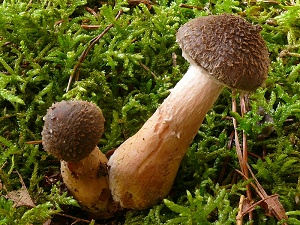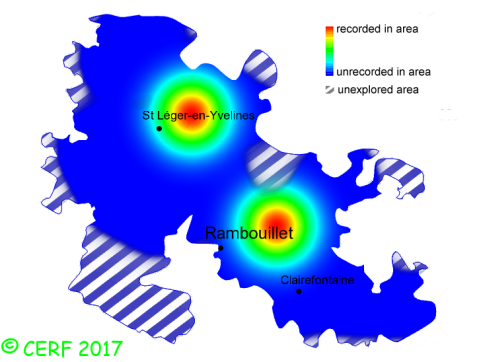| Armillaria ostoyae (Romagn.) Herink |
|
|
|
|
|
|
The cap is reddish brown, with darker scales, with a central umbo; its margin is inrolled, slightly striate, often wavy. The cap surface is scaly, not viscid nor sticky. The stem is flexible, thin, yellowish at the base, with a ring. The flesh is white, unchanging; its taste is irritant or soapy; the odour is faint; its texture is fibrous. The gills are white then flesh pink, adnate, crowded . The spore print is white. This species is parasitic or saprophytic. It grows on wood (dead or not), in tufts, in coniferous (sometimes deciduous) woods. The fruiting period takes place from July to December.
Distinctive features : white ring and veil; dark brown scales in the middle of cap Armillaria ostoyae is rare and localised in the forest of Rambouillet, and is occasional, more generally speaking . | ||
|
page updated on 14/01/18

